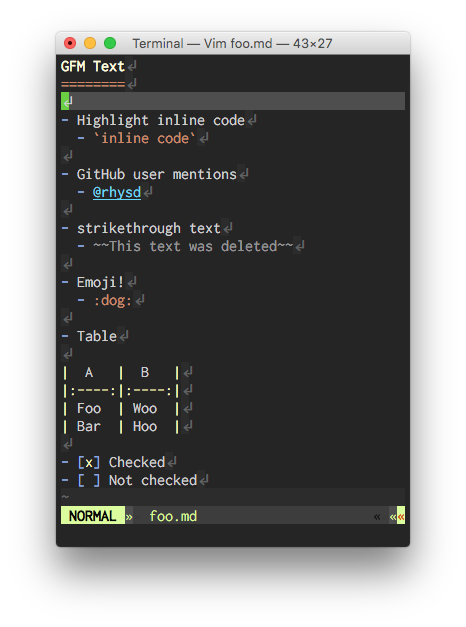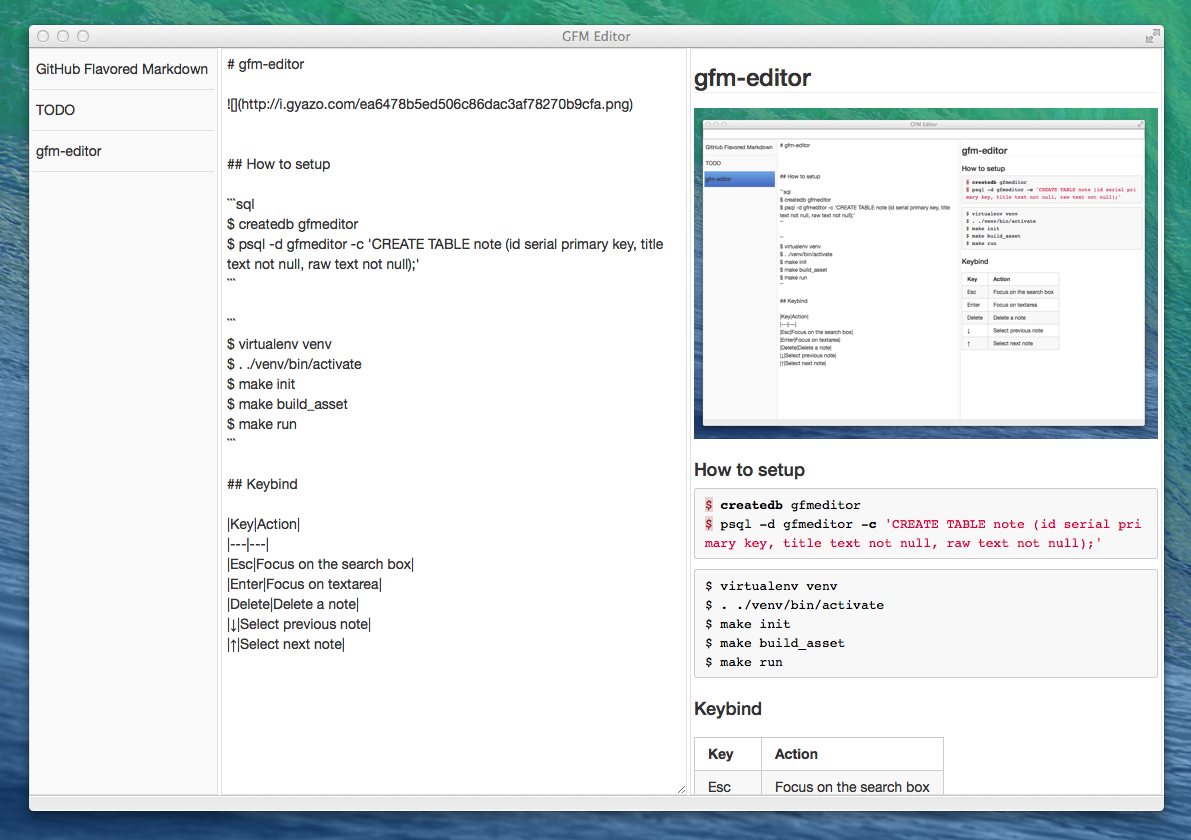



This cheatsheet is modified from Joshua Pekeraa cheat sheet for 'Markdown Here', but this is just GitHub Flavored Markdown. Github has released its own markdown language based on the original markdown.

For more complete info, see John Grubers original spec and the Github-flavored Markdown info page. This page will cover some basics, and include a link to a separate guide that goes into more detail. This is intended as a quick reference and showcase. Github Flavored Markdown (GFMD) is based on Markdown Syntax Guide with some overwriting as described at Github Flavored Markdown. However, before you can get started with making your new profile, you're going to need to have a basic understanding of Markdown. You can temporarily obscure sections of your Markdown by creating a collapsed section that the reader can choose to expand. Adding a README to your special new repository will render it on your main account page on GitHub! Adding a README.md file to a normal GitHub repository will render it below the list of files contained within the repo.
#Github flavored markdown code
Basic writing and formatting syntax Create sophisticated formatting for your prose and code on GitHub with simple syntax. It also supports rendering Markdown (.md) files, which is to say, if you add a Markdown file to a GitHub repository, it will show up formatted when you click on it on GitHub. GitHub combines a syntax for formatting text called GitHub Flavored Markdown with a few unique writing features. GitHub uses its own version of Markdown, referred to as GitHub Flavored Markdown. certain messaging platforms, documentation, and specific to what you're interested in today, README files. Put more simply, Markdown makes it easy to create formatted text for a variety of uses not including GitHub, such as blogging. StackEdit supports different Markdown flavors such as Markdown Extra, GFM and CommonMark. It's going to ignore anything that you do with underscores, unlike traditional Markdown.Markdown is a lightweight markup language with simple syntax for creating formatted text. So whenever you want to create, say, a bold or emphasis tag, you would just use stars or asterisks next to each word. Number one, GFM ignores any underscore characters that you put in your text. It tells you all the differences between the traditional Markdown and GFM. You can find out more about GFM on this page. An alternative could be to color it in blue using links: 2014, The year of Blue () That would create the following output: If you really want to have another color, another alternative is to use an image (e.g. One of the most popular changes is something called GFM or GitHub Flavored Markdown. There is no such feature available right now. However, a lot of these will be dependent on the editor or the platform that you're using. And therefore some variants of the language have appeared to allow for additional and sometimes useful features. Markdown was created by John Gruber in 2004, and although the language has had minor updates it hasn't really grown significantly in the past few years.


 0 kommentar(er)
0 kommentar(er)
